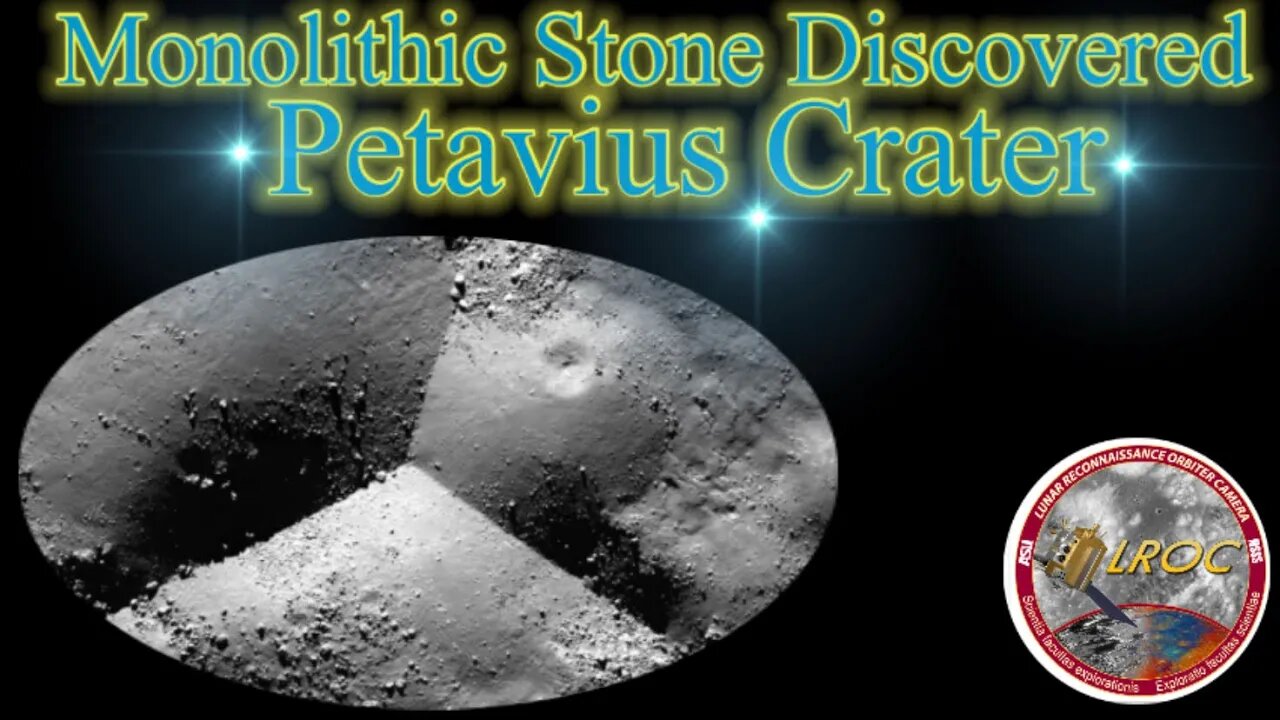Premium Only Content

Monolithic stone Discovered In the Petavius Crater ? Lunar reconnaissance orbiter LRO Hi-Res Photo
A truly unexplainable anomaly found in the Petavius Moon Crater  photos taken in 2014 by The Nasa Lunar reconnaissance orbiter or The LRO Hi  resolution photo gallery from the Arizona State University link Below
 This is an official NASA photo and it has not been manipulated in anyway shape or form
Lunar reconnaissance orbiter Nasa gallery link
Petavius is a large lunar impact crater located to the southeast of the Mare Fecunditatis, near the southeastern lunar limb. Attached to the northwest rim is the smaller crater Wrottesley. To the southeast are Palitzsch, Vallis Palitzsch, and Hase. Farther to the north is the large crater Vendelinus. Petavius appears oblong when viewed from the Earth due to foreshortening. Petavius is Imbrian in age.
The outer wall of Petavius is unusually wide in proportion to the diameter, and displays a double rim along the south and west sides. The height of the rim varies by as much as 50% from the lowest point, and a number of ridges radiate outwards from the rim. The convex crater floor has been resurfaced by lava flow, and displays a rille system named the Rimae Petavius. The large central mountains are a prominent formation with multiple peaks, climbing 1.7 kilometers above the floor. A deep fracture runs from the peaks toward the southwest rim of the crater.
Rev. T. W. Webb described Petavius as,
"one of the finest spots in the Moon: its grand double rampart, on east side nearly 11,000 ft (3,400 m). High, its terraces, and convex interior with central hill and cleft, compose a magnificent landscape in the lunar morning or evening, entirely vanishing beneath a Sun risen but halfway to the meridian."
Petavius is one of the largest craters of Lower (Early) Imbrian age.[1]
The most favorable time for viewing this feature through a telescope is when the Moon is only three days old. By the fourth day the crater is nearly devoid of shadow.
70-cm radar images of this crater and its surroundings show that the region of the surface beyond the wide outer rampart of Petavius has a dark halo, characteristic of a smooth surface free of boulders. It is thought that this may have been created by radial outbursts during the original impact that swept the area clean.
Petavius B to the north-northwest of Petavius has a small ray system that lies across the surface of Mare Fecunditatis. Due to these rays, Petavius B is mapped as part of the
-
 8:03
8:03
MattMorseTV
15 hours ago $5.91 earnedThings in the UK just got INSANE...
66.8K108 -
 3:02:10
3:02:10
daniellesmithab
10 hours agoAlberta Next: Fort McMurray Town Hall
9.59K1 -
 2:11:17
2:11:17
Side Scrollers Podcast
19 hours agoINSANE Illegal Migrant Propaganda Xbox Game + Paypal REFUSES To Pay Dev + More | Side Scrollers
56.8K3 -
 20:58
20:58
GritsGG
1 day agoProtect the President Challenge on Warzone!
12.9K -
 1:49:07
1:49:07
The Michelle Moore Show
2 days ago'Biden's Immigration Mess, President's Trump Spiritual Cry For Help, English Speaking Truckers Only, Woke CEO's Killing of Conservative Brands, Palantir's Kill Chain' Mark Taylor: The Michelle Moore Show (Aug 25, 2025)
34K94 -
 LIVE
LIVE
Lofi Girl
2 years agoSynthwave Radio 🌌 - beats to chill/game to
210 watching -
 2:14:18
2:14:18
The Pascal Show
14 hours ago $0.64 earnedTHEY LIED TO POLICE AGAIN? Jake & Rebecca Haro Have Lost Their Minds! Emmanuel Haro Search Continues
8.48K -
 1:25:52
1:25:52
TruthStream with Joe and Scott
2 days agoSG Sits Down w/ LT From "And We Know": An 80K FT View of Humanity's Great Awakening from 8/22/2025
20.9K16 -
 15:54
15:54
Lacey Mae ASMR
12 hours ago $0.88 earnedASMR For Sleep in 15 Minutes!
13.1K10 -
 3:16:38
3:16:38
Price of Reason
13 hours agoTrump FIRES Fed Governor Lisa Cook! Cracker Barrel CRISIS Continues! James Gunn DCU Woes! Gamescon!
116K8